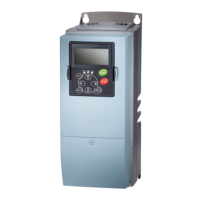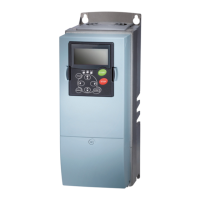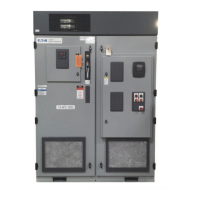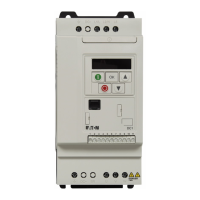SLX9000 Adjustable Frequency Drives User Manual
MN04003020E
For more information visit: www.eaton.com 9-19
January 2009
Figure 9-13: DC Braking Time at Start
Prohibit Frequencies
2.4.6 DC-braking time at start ID516
DC-brake is activated when the start command is given. This parameter defines the
time before the brake is released. After the brake is released, the output frequency
increases according to the set start function by parameter 2.1.11. See Figure 9-13.
2.4.7 Flux brake ID520
Instead of DC braking, flux braking is a useful form of braking with motors ≤15 kW.
When braking is needed, the frequency is reduced and the flux in the motor is
increased, which in turn increases the motor’s capability to brake. Unlike DC braking,
the motor speed remains controlled during braking.
Flux braking can be set ON or OFF.
0 Flux braking OFF
1 Flux braking ON
Note: Flux braking converts the energy into heat at the motor and should be used
intermittently to avoid motor damage.
2.4.8 Flux braking current ID519
Defines the flux braking current value. It can be set between 0.3 x I
H
(approximately)
and the current limit.
ID516
Output
Frequency
t
2.5.1
2.5.2
Prohibit frequency area 1; Low limit
Prohibit frequency area 1; High limit
ID509
ID510
In some systems it may be necessary to avoid certain frequencies because of
mechanical resonance problems. With these parameters it is possible to set a limit
for the “skip frequency” region. See Figure 9-14.

